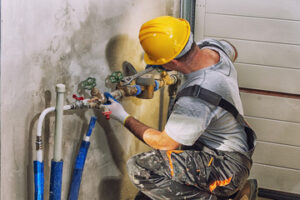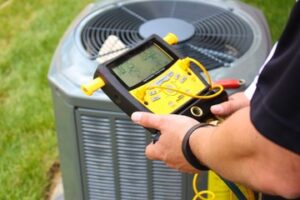Integrated Pest Management (IPM) is the best long-term approach to managing pests. IPM involves careful evaluation of pest infestations, their damage potential and environmental conditions that promote them.

Often this means monitoring the numbers of insect, nematode and disease organisms. It also can mean using cultural practices to reduce pest infestations, such as planting trap crops, varying cropping times or row width, and applying weed killers. Click Here to learn more.
There are many steps you can take to prevent pest infestations from occurring. These preventive measures include reducing food and water sources, removing shelters, and sealing entry points into buildings. Preventive techniques also involve sanitation practices and maintenance procedures that make facilities less attractive to pests.
There may be dozens of imperceptible cracks, gaps and openings into your home and business that pests exploit to gain entry. Regular inspections of your facility can detect these entries. Store clothing and linens in sealed plastic containers to protect them from moths and other insects. Ensure that garbage cans are properly sealed and that waste is removed regularly to deny pests access to their preferred food sources. Maintain landscaping and keep shrubs, bushes, mulch and stacked firewood away from your structure to eliminate possible pathways into the building.
Natural enemies, predators, parasites and pathogens can control pest populations without the use of chemicals. They may take some time to have an impact on a pest population, so biological controls are best used for early detection of pests and as a supplement to other control methods.
Other mechanical or physical controls are traps, screens, barriers, fences and nets that deter or kill pests without the use of chemicals. The use of radiation, heat or electricity to alter the environment is sometimes effective in controlling pests.
Chemicals that disrupt the balance of a pest’s life cycle, such as insecticidal soaps, may be useful for early detection of pests or to control them after they have become established. These should be selected carefully and applied at the appropriate time to have the greatest effect on the targeted pest population, minimizing disruption to beneficial organisms.
Integrated Pest Management (IPM) involves the use of all available methods for prevention and suppression of pests, including habitat manipulation, modification of cultural practices, and resistance management. In addition, pesticides are used only when monitoring indicates that they are needed according to established guidelines, and are used with the goal of minimizing risks to human health, beneficial organisms, nontarget organisms and the environment. This approach reduces the need for more drastic control measures and promotes sustainable agriculture and forestry.
Suppression
The goal of pest suppression is to reduce a pest population to an acceptable level. This is often accomplished with a combination of prevention and control methods. Control techniques must be chosen carefully to ensure that they will not harm people, pets, or plants other than the pest being controlled.
Using preventive controls to keep pests from becoming problems avoids the need for costly control actions. These measures include frequent cleaning, removing food sources, limiting shelter availability, and destroying the conditions that promote pest infestations.
Some natural forces, such as weather and topography, limit the number of pests that can occur in a certain area. Others, like natural enemies or the presence of physical barriers, influence pest populations by injuring or consuming them. Sanitation practices and avoiding the use of seeds or transplants that contain pests also can prevent pest infestations.
Chemicals can be used to kill pests, but only if the chemicals are applied in the right quantity and at the correct time to be effective. The occurrence of natural enemies, the effect of weather, and the ability of the pest to become resistant to treatment all must be taken into consideration before chemical control measures are employed.
Pests are unwanted organisms, such as insects, bacteria, fungi, nematodes, weeds, or vertebrates, that damage, degrade, or destroy agricultural crops and foods, home gardens, lawns, trees, and shrubs, wildlife habitats, and terrestrial and aquatic ecosystems. Even beneficial organisms, such as pollinating bees or lacewing larvae, can become pests if their numbers get out of control.
When pests do invade, it is important to take quick action to reduce their numbers and prevent them from multiplying to an unacceptable level. The use of control measures that avoid or minimize harm to non-target organisms is preferable to the use of more destructive chemicals.
Preventive and suppression actions should be combined with monitoring to identify a pest problem early. Frequently inspecting the area where a pest infestation is occurring and evaluating whether or not a management strategy needs to be changed will enable an individual to make better decisions about when and how to use control tactics.
Detection
In a plant pest management strategy, identification is the first step to prevent the problem from occurring. This involves checking for the presence of a pest, approximating its population size to determine if it is reaching unacceptable levels and deciding whether control tactics should be initiated.
In addition to knowing the type of pest, it’s important to know its life cycle and damage potential to help determine if it can be controlled with one or more pest management tactics. Some species have multiple generations a year, while others produce only one or two. Also, some organisms have resistance characteristics that can make them resistant to a range of control tactics.
Even if all the right preventive measures and sanitation practices are in place, the fact is that pests will always find ways into buildings, plants and other enclosed environments. In food processing and preparation facilities, for example, pests often arrive “delivered,” either infesting incoming ingredients or hitching rides on pallets, forklifts and new equipment.
A detection program can help prevent these pests by identifying where the breach or hole is. “As soon as you find a spot where pests are getting in, you can take action to reduce the chance of it happening again,” says Alex Blahnik, field training manager for Wil-Kil Pest Control. He suggests inspecting all incoming product, using the FIFO (first-in, first-out) principle and having any new equipment thoroughly cleaned and serviced before it’s installed in a facility.
Other inspection strategies can include the use of traps, monitoring for pheromones emitted by female pests to attract males or to induce mating, and exposing objects to low or high temperature and/or controlled atmosphere fumigation. And of course, all staff should be urged to wear protective gloves and a face mask when handling artifacts in suspected infested areas.
Another way to detect pests is by using a variety of methods, including specialized microscopes and acoustic detection. In addition, a simple block test can sometimes be effective in pinpointing the location of a pest infestation: Simply cover a suspected entry point with crumpled paper. If the pest tries to enter through that area, it will leave behind telltale signs of chewing, such as teeth marks and bits of wall material.
Treatment
Insects, weeds, rodents and other pests can damage crops, homes, lawns and gardens. They can also transmit disease and cause other problems. Control of pests involves a number of measures, including monitoring and scouting, proper plant selection, cultural practices, biological control and chemical controls. The goal is to reduce the incidence of pests to an acceptable level and minimize adverse effects on people, plants, animals and the environment.
Correctly identifying the pest is essential to an effective pest management program. Use reference books and garden centers to learn how to identify your pests and to find out what they eat, how they reproduce and where they live. The information you gather will help you decide whether the pest can be tolerated or if it warrants treatment and the best timing of treatments.
Pests usually require food, water and shelter. You can reduce the attracting power of a site by eliminating unnecessary water sources such as puddles, and by providing adequate shelter such as fences or hedgerows. Clean up and close trash receptacles, tarps, and other containers to deny pests food and hiding places. Prune and maintain trees, shrubs and grasses to remove overhanging branches or roosting areas. Maintaining good soil conditions is important to avoid creating moist, humid, or dry habitats where pests thrive.
Biological controls are organisms, such as birds, mammals, or insects that feed on or kill pests and help control their populations. Biological pest control is often used in conjunction with other techniques to achieve maximum benefits.
Chemical pest control uses products such as baits, granules, insecticides and sprays that destroy or repel pests. Chemicals must be applied correctly to prevent environmental or human health hazards. It is important to understand the risks and limitations of chemicals before using them, and to follow labels and other precautions to limit exposure. Basic personal protective equipment (PPE) includes long-sleeved shirts, pants, closed-toe shoes and face and eye protection. Proper application of pesticides, combined with preventive strategies, can be an effective way to reduce the need for treatment.

